This Wiltshire masterpiece was vastly improved by an 18th century ‘Architect’ Earl and is now on the silver screen in the new 'Frankenstein' film
In the early 18th century, Wilton House in Wiltshire underwent improvement at the hands of the 9th Earl of Pembroke, an enthusiastic amateur architect. More recently it's become one of Britain's most coveted filming locations. Words by John Martin Robinson. Photography by Will Pryce and Simon Upton.

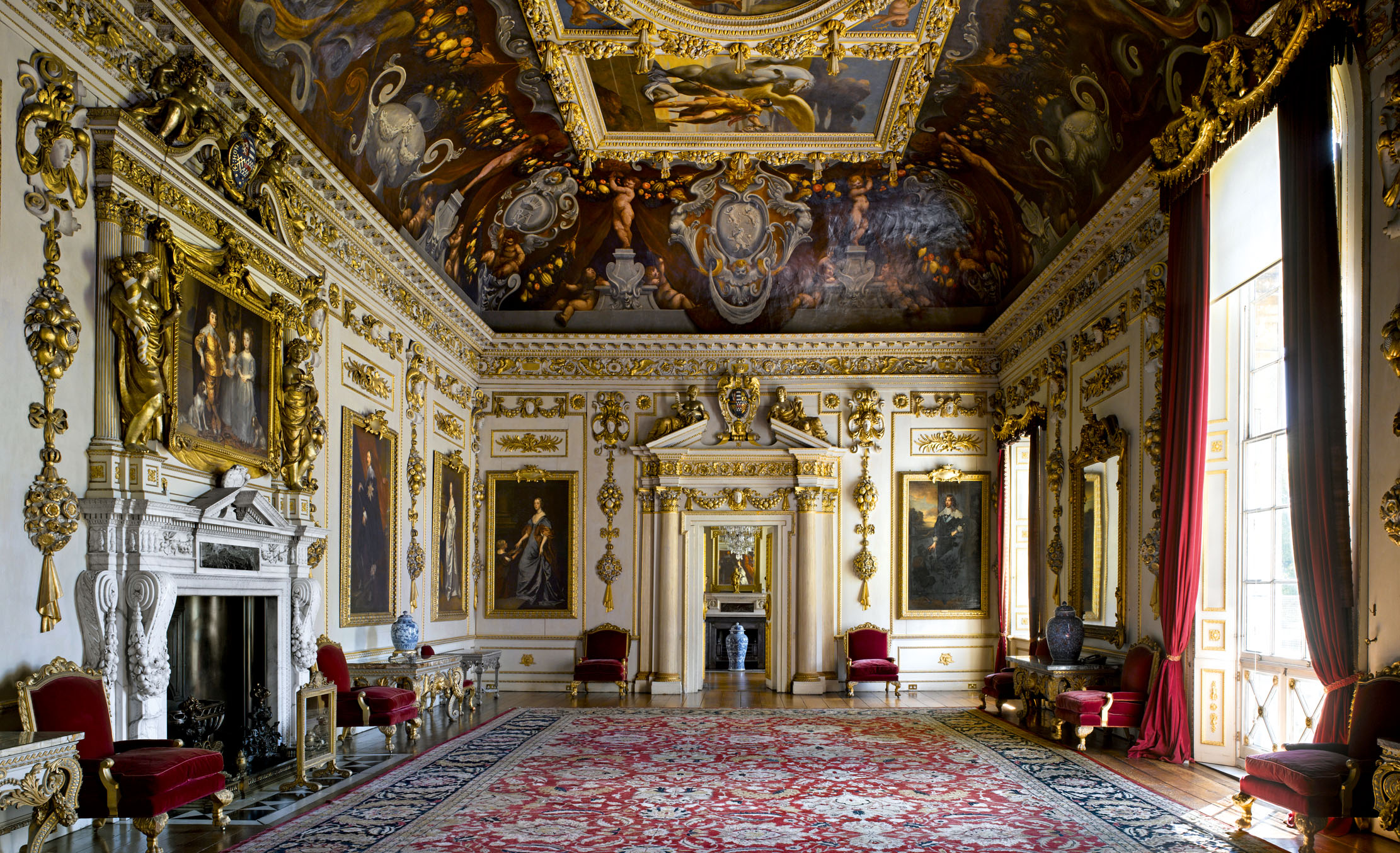
This feature originally appeared in a May 2021 issue of Country Life to mark the publication of a then new book on Wilton which has been the country seat of the Earls of Pembroke for 400 years.
In recent years, the house has established itself as a popular filming location and has appeared in 'The Crown', standing in for Buckingham Palace, 'Young Victoria', 'Tomb Raider (the 2018 version starring Alicia Vikander), 'Bridgerton' and 'Emma' (the 2020 version).
In Guillermo del Toro’s 'Frankenstein', out now on Netflix, Wilton was one of four opulent residences across the UK used to create the Frankenstein family home. The other three were Gosford, Burghley and Dunecht Houses — with the footage being stitched together with that taken at Wilton to create del Toro's desired effect.
According to 'Elle Decor', del Toro was taken with Wilton 'after he found out that Stanley Kubrick's 'Barry Lyndon' —which inspired his take on 'Frankenstein' —was also shot on the sprawling estate.' The director transformed the Double Cube Room (photographed for Country Life in 2021 and visible in the first photograph in this article) into the Frankenstein family's own dining room, and roamed the 21-acre grounds in pursuit of suitable exterior shots.
A post shared by Netflix UK & Ireland (@netflixuk)
A photo posted by on
The splendours of Wilton today owe a great deal to the early 18th century and the figure of Henry, 9th Earl of Pembroke, (1689–1750), known as the ‘Architect’ Earl. His often-overlooked contribution to this magnificent house — in origin a great Benedictine convent that was suppressed at the Reformation and repeatedly remodelled thereafter — was described by Horace Walpole: ‘The towers, the chambers, the scenes which Holbein, Jones and Vandyke had decorated, and which Earl Thomas had enriched with the spoils of the best ages, received the last touches of beauty from Earl Henry’s hand… No one had a purer taste in building than Earl Henry, of which he gave a few specimens besides his work at Wilton.’
As a young man, Henry developed an intense interest in architecture. He was educated at Christ Church, Oxford, where he came under the influence of the Dean, Dr Henry Aldrich (1648–1710), an arbiter of architectural taste involved in many major projects in the university. These included the construction, from 1707, of Peckwater Quadrangle at Christ Church, to which, as an undergraduate, Henry subscribed £20.
After matriculating in 1705, Henry went on the Grand Tour. He visited Venice in 1712, observing the architecture of Palladio, and spent time in Rome, where he met the eminent English architect, decorator and painter William Kent (1685–1748). He also went to Naples with the philosopher Earl of Shaftesbury.
Exquisite houses, the beauty of Nature, and how to get the most from your life, straight to your inbox.
Even before inheriting his estates in 1733, Henry introduced his father — with whom he shared an interest in the Arts — to such friends as Sir Andrew Fountaine (1676–1753), the Norfolk landowner, antiquarian and amateur architect, and the Revd William Stukeley (1687–1765), the antiquarian clergyman. Foun- taine became the honorary librarian at Wilton and Stukeley, who had a strong interest in prehistoric monuments, pursued studies of the stone circles at Stonehenge and Avebury in Wiltshire, refuting Inigo Jones’s suggestion that Stonehenge was Roman.
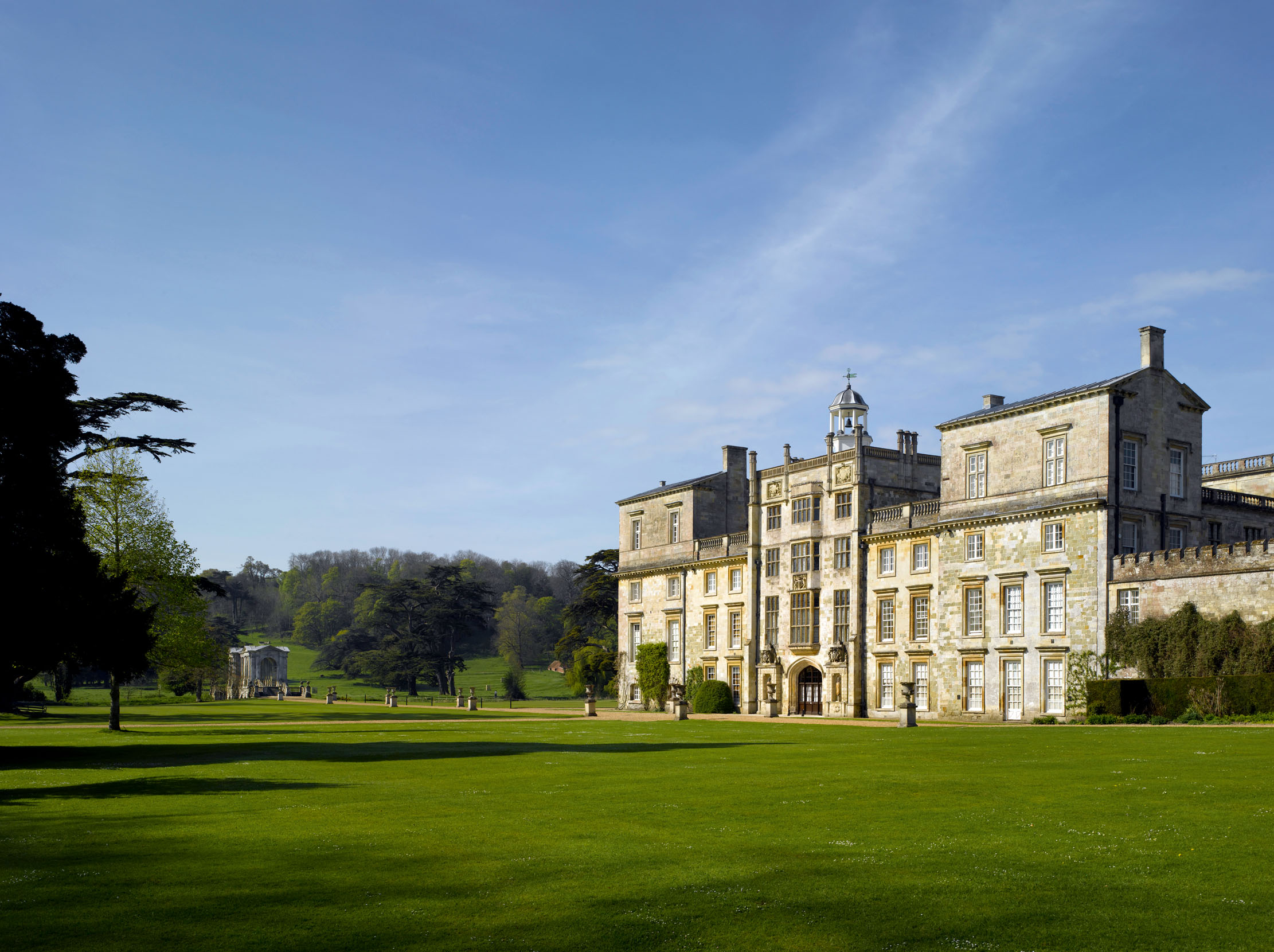
The east front of Wilton House, overlooking the naturalised landscape created by the 9th Earl in the 18th century. Note the Palladian Bridge to the left.
Henry also actively designed buildings in the Palladian manner, a Classical idiom that was informed by the architecture of both Palladio and Inigo Jones. He designed villas at Marble Hill, Twickenham, and Wimbledon House, as well as the Column of Victory at Blenheim, Oxfordshire, and the water tower at Houghton Hall in Norfolk. In addition, he built a house for himself in Whitehall and a summer villa, Westcombe House, near Greenwich, in about 1730 (demolished in 1854). It is recorded in four paintings by George Lambert in the North Hall at Wilton.
In these projects, Henry was assisted by Roger Morris (1695–1749), who acted as his architectural amanuensis. Their introduction was probably made by Colin Campbell — a pioneer Palladian architect and author of the great monograph on the kingdom’s modern architecture, Vitruvius Britannicus — whom Morris had previously served as an assistant. Campbell and the Earl, meanwhile, must have come into contact through the Prince of Wales, whom they respectively served as architect and Gentleman of the Bedchamber.
The Earl valued Morris’s services highly, and in 1734 — a year after his inheritance — presented him with a large silver cup engraved with a cartouche portrait of Jones as a token of his regard. The cup bears the inscription: ‘Given by my Noble Patron Henry, Earl of Pembroke, by whose favour alone I am enabled to fill it. R. Morris 1734.’
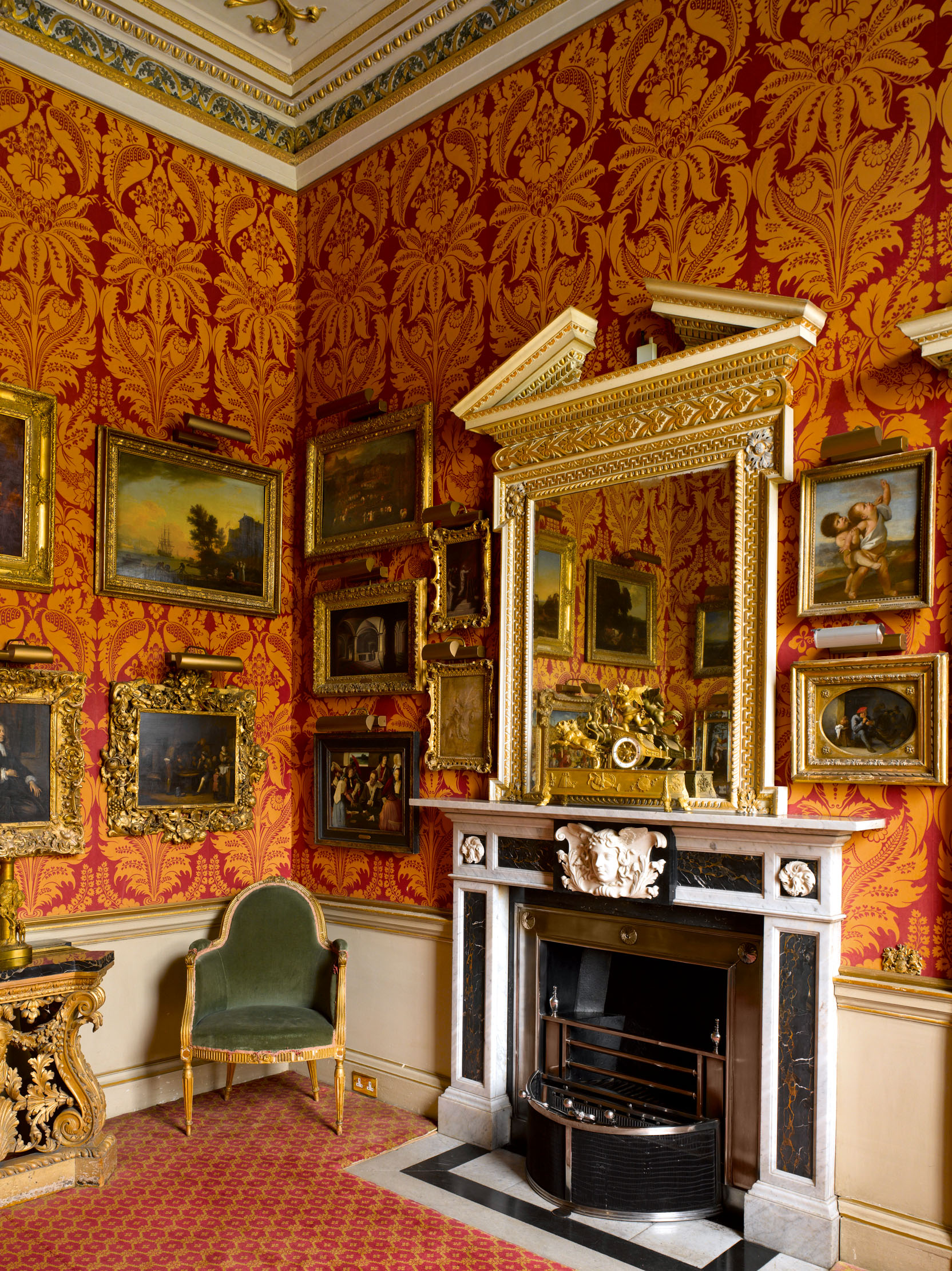
The King’s Closet, Wilton House. The looking glass was designed by the 9th Earl and transferred here when the fireplace was installed by Westmacott in the 19th century.
The principal edifice at Wilton with which Roger Morris assisted his ‘Noble Patron’ is the Palladian Bridge constructed across the River Nadder to the south-east of the house in 1736–37. In 1740, George Vertue wrote that the bridge was ‘the design of the present Earl of Pembroke and built by his direction’, information that Walpole corro-borated. Vitruvius Britannicus, however, attributed the design to Roger Morris. This was perhaps a kindness on Lord Pembroke’s part; he did not need promotion and publicity, but Morris did. The mason John de Val, whom Morris supervised as executant architect and whose bill for stonework came to £103, got a mention as well, with his initials ‘J.V. 1737’ inscribed on the structure.
The Palladian Bridge was inspired by Palladio’s unexecuted concept for Venice’s Rialto Bridge (as well as — perhaps — a lost sketch by Jones). It was subsequently copied widely, as for example at Stowe, Prior Park, and Hagley in England, as well as at Tsarskoe Selo for Catherine the Great in Russia. Viewed from either end, the bridge assumes the form of a temple approached by steps and it commands an idyllic classical landscape with smooth lawns, majestic cedar trees and a meandering river. From it, the visitor could enjoy views up and down the river, to the east towards Salisbury Cathedral’s spire, three miles away, and, to the south-west, the arcaded front of the 17th-century stables.
To create this setting, the Earl swept away the last vestiges of the formal 17th-century gardens: in 1734, he demolished the enclosing walls and grassed over the straight paths, to open up the landscape. He also removed a grotto and used its architectural elements on the superstructure of the dam built in 1740 to widen the river (this was removed in the 19th century).
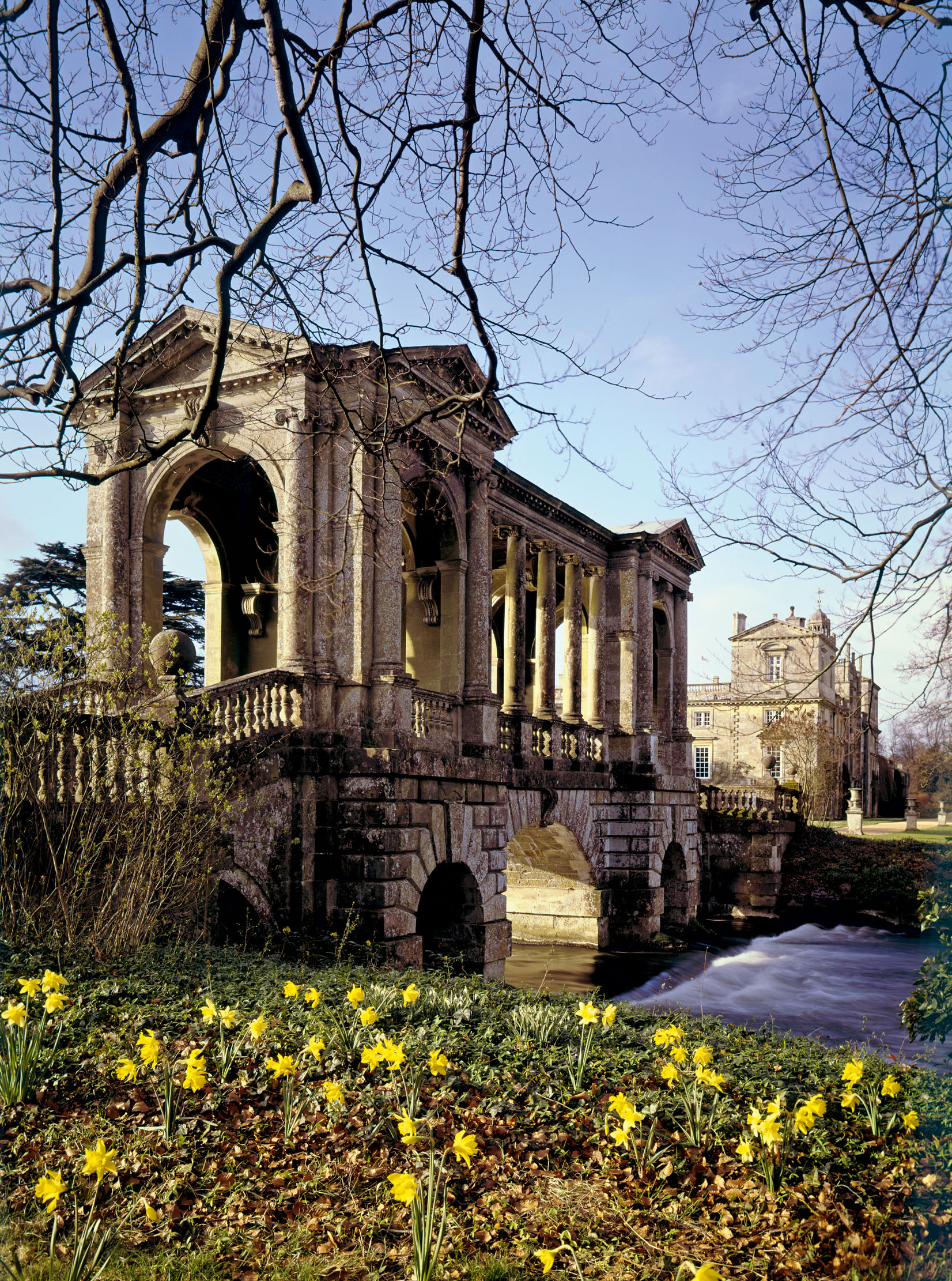
Viewed from either end, the 9th Earl’s Palladian Bridge over the River Nadder assumes the form of a temple in the landscape. The bridge has been widely copied. Wilton House, Salisbury.
The cedar trees may have been introduced in the 17th century and were originally grown from seed in pots. As part of the 9th Earl’s programme, however, they were scattered informally. In addition, the hill to the south opposite was densely planted as a development of the 17th-century wilderness walks. The result was one of the earliest Georgian landscape gardens, described by Dr Waagen from Berlin on his visit to Wilton in the 1840s as ‘Nature converted into paradise’.
The Earl’s alterations to the main house complemented his work in the grounds. The ‘touches of beauty’ that Walpole admired included the addition to the south parapet of the statue of Fame with two trumpets, sitting on a globe. She lent emphasis and glamour to the French-inspired, heraldic ornament below. Lord Pembroke was also responsible for some Gothic touches on the east front, including a pair of oriels intended to keep the gatehouse company and a new apartment for Lady Pembroke, additions later swept away by James Wyatt.
Inside the house, the Earl created new apartments on the ground floor, including family rooms in the east wing, a bathing pool or sunken bath in the ground floor of the south-west tower and another bath in the room next to his bedroom on the east side (he was a keen swimmer). In the state rooms, the Earl’s hand is pervasive, subtly enhancing the 17th-century interiors. In the Double Cube Room, the most celebrated space in the building, he placed the van Dyck portrait of Charles I’s children in the overmantel frame, which makes a perfect complement to the flanking 17th-century statues of Ceres and Bacchus, gods of hospitality appropriate for the ‘King’s Great Room’ used as the dining room.
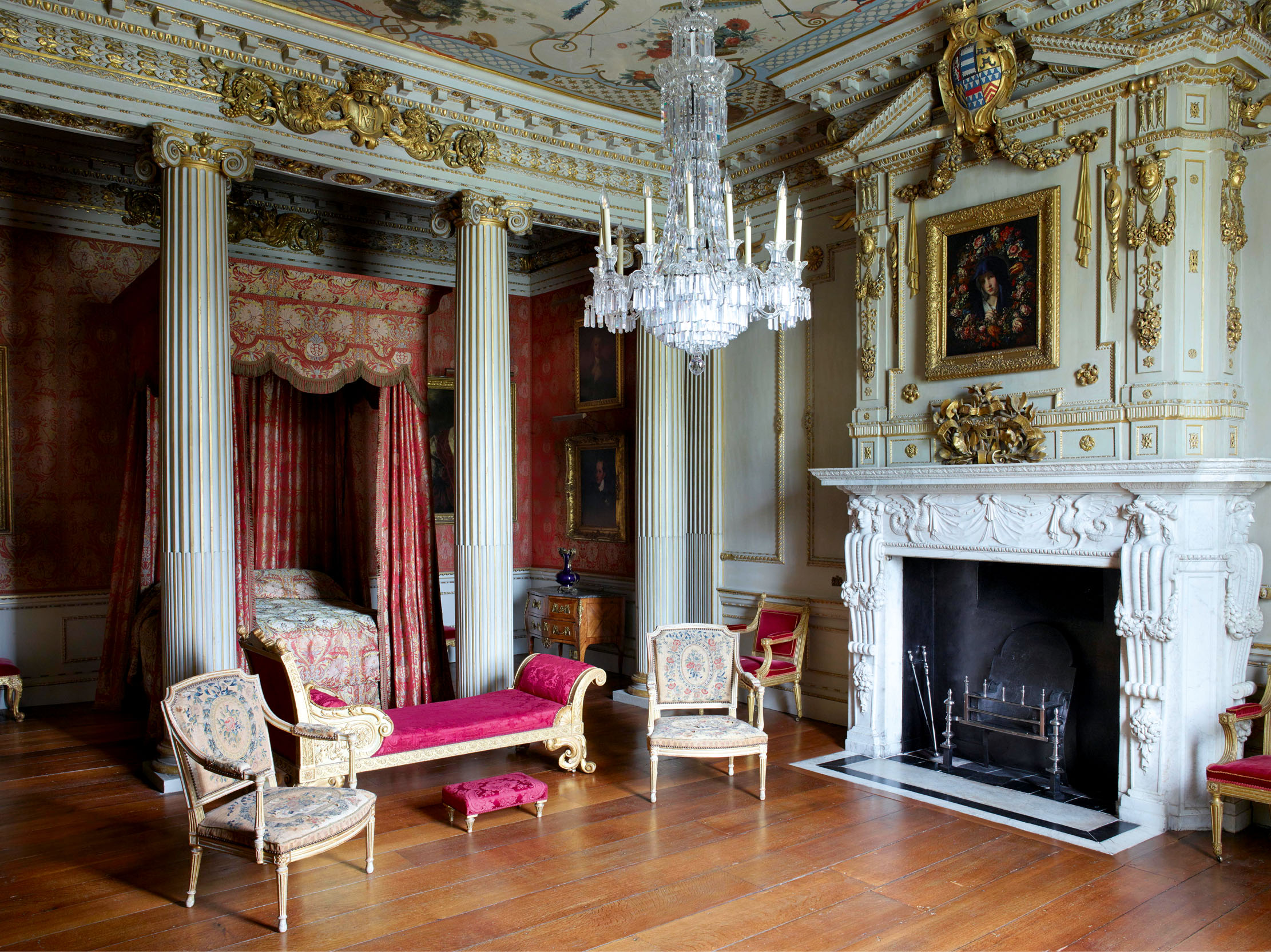
The Colonnade Room, with its 17th-century fireplace. The Earl enlarged the room by inserting the screen of Ionic columns.
The adoption of names for the state rooms was the Earl’s initiative, too, in the 1730s, referring to their proportions or architectural features. Thus the Passage Room became the Hunting Room after its paintings; the With-drawing Room became the Single Cube Room, derived from its proportions: 30ft square and high. The Great Room or Dining Room became the Double Cube, 30ft wide and 60ft long. The King’s Bedroom became the Colon- nade Room, named after the four fluted Ionic columns introduced by the Earl to frame the bed alcove, replacing two small, rear closets. The King’s Dressing Room or Cabinet became the Corner Room, because of its situation in the south-east tower. These new descriptions were cemented by their use in succeeding editions of the Wilton guidebooks and have been used ever since.
Several of the new interiors were decorated by the French artist Andien de Clermont, who lived in England from about 1716 to 1756. He designed tapestries for the Soho Tapestry factory in London and was also patronised by many of those in the circle of the Prince of Wales.
Of particular interest is Clermont’s decoration of the Corner Room ceiling with Roman military trophies, a scheme unique in his work and illustrative of the 9th Earl’s military career as a young man. The paintings were added to a ceiling designed by the Earl, with The Conversion of St Paul by Luca Giordano framed by stucco ‘beams’ identical to those on the ceiling of the Palladian Bridge. In addition, the similar placing of the painting of Lorenzo Sabbatini’s The Birth of Venus in the ceiling of the adjoining closet was initiated by Lord Pembroke in about 1730. Both of these paintings were already in the Earl’s collection.
Clermont was also employed to paint the walls of the Geometric Staircase leading from the Double Cube Room to the Stone Hall. These paintings, however, were destroyed in about 1806, when Wyatt removed the stair and created the Great Anteroom to give access from the cloisters to the state rooms. Fragmentary traces on the walls were discovered during investigations at the time of a major restoration in 1990. The scheme took the form of windows or aedicules decorated with arabesques on a stone-coloured ground. In addition, Clermont decorated the interior of the pavilion on the dam over the River Nadder, with ‘grotesque figures and ornaments’.
As well as the work to the state rooms, the 9th Earl remodelled some interiors on the ground floor to his own design. In the south range, he redesigned the central Stone Hall from the courtyard (under the Double Cube), which served as the exit from the show rooms for 18th-century tourists and where further busts and statues were displayed. Another smaller room was created on the ground floor for the reliefs from his father’s sculpture collection. This enabled him to thin out some of the sculpture in the rooms above and create more of the effect of a dedicated sculpture room or gallery, as at Holkham and Petworth.
The ground floor of the Geometric Staircase was originally embellished with a life-size statue of Shakespeare, one of the cultural heroes of Wilton, recalling the literary patronage of the 2nd Earl and his wife, Mary Sidney. The sculpture was commissioned from Peter Scheemakers in 1743 and cost about £100.
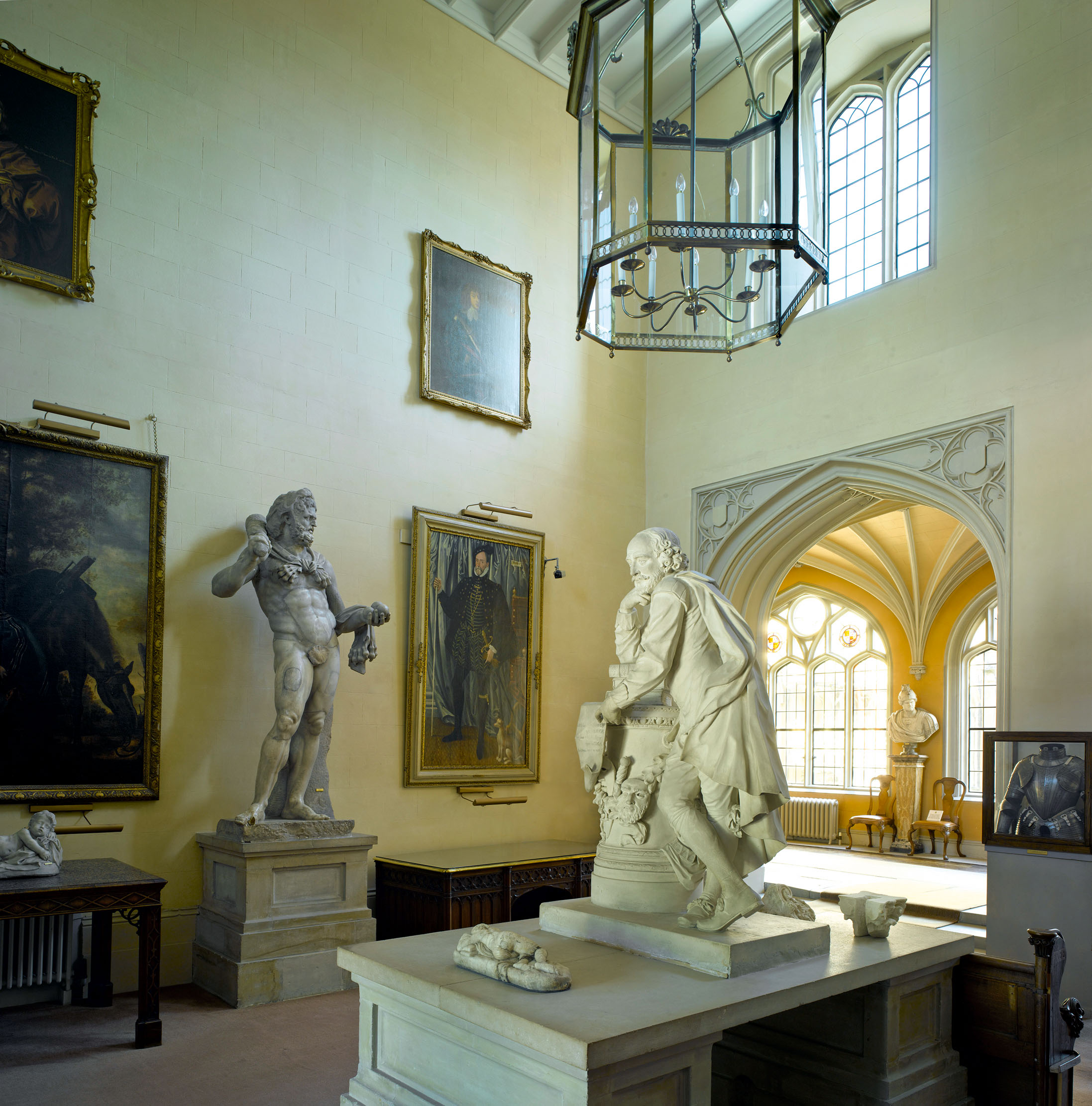
Hercules guards the North Hall at Wilton House, opposite Peter Scheemaker's statue of William Shakespeare.
It is a close replica of Scheemakers’s other Shakespeare sculpture, made to the design of Kent, located in Poets’ Corner at Westminster Abbey. On the scroll of the Wilton statue is a quotation from Macbeth — that in the abbey quotes The Tempest — presumably chosen by the 9th Earl:
'Life’s but a walking shadow, a poor player That struts and frets his hour upon the stage, And then is heard no more. It is a tale Told by an idiot, full of sound and fury, Signifying nothing'
The Shakespeare statue is now the centrepiece of Wyatt’s North Hall, all the 9th Earl’s work on the ground floor of the south wing having been remodelled in the early 19th century. The chimneypieces and pedimented overmantel mirrors were re-used in other rooms, as in the King’s Closet.
The private family rooms Lord Pembroke designed in the east range do survive, however. The Smoking Rooms, as they are generically called, comprised his bedroom, a family drawing room and Lady Pembroke’s apartment, including winter and summer bedrooms. Here, the Architect Earl, assisted by Morris, so successfully emulated Jones that their work was mistaken for that of the master and deliberately preserved by Wyatt. The mistake is unconscious testimony both to the quality of their work and the long shadow cast by Jones over Wilton.
